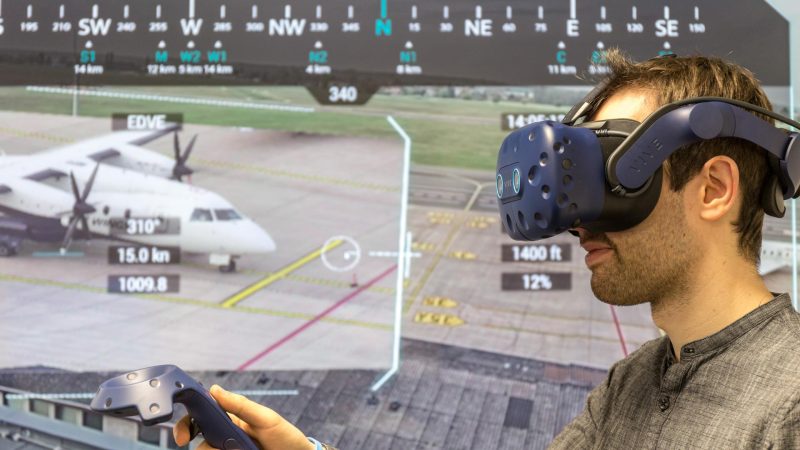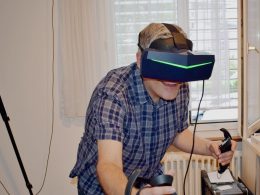The German Aerospace Centre (DLR) and universities have developed a concept for cost-effective remote monitoring of small airfields. With the combination of several cameras and virtual reality goggles, one controller can carry out the work for several small airfields.
View through virtual binoculars
Many smaller and very small aerodromes do not offer their air traffic customers complete and continuous air traffic control on site. At such aerodromes, there are only basic security services. The idea for such airports is a combination of a single pan-tilt-zoom (PTZ) camera and a simple panoramic image of the aerodrome, the video images of which are displayed via virtual reality goggles.
Tower for your pocket
In their concept, the researchers assume that small airfields could be connected to a central remote monitoring centre (remote tower centre) with such a remote monitoring solution in the future. One air traffic controller would then be centrally responsible for several aerodromes, which would theoretically open up new possibilities for small aerodromes. For example, they could offer location-independent and time-limited information and safety services that are currently not available to their customers.
The concept is at an early stage of development. Its usability in practice and the resulting effects are to be analysed and tested in further research work at the institute.
First prototype undergoing testing in Braunschweig
An initial prototype was developed at the DLR Institute of Flight Guidance in Braunschweig and tested with live data from Braunschweig Airport. Nine air traffic controllers and employees of flight information services (Aerodome Flight Information Service Officers) took part in a test campaign. Even though it became apparent that the use of VR is not suitable for all airports, the feedback from the groups basically confirmed the potential, especially for airports with low traffic volumes and the simplest flight information services.
Source: dlr









